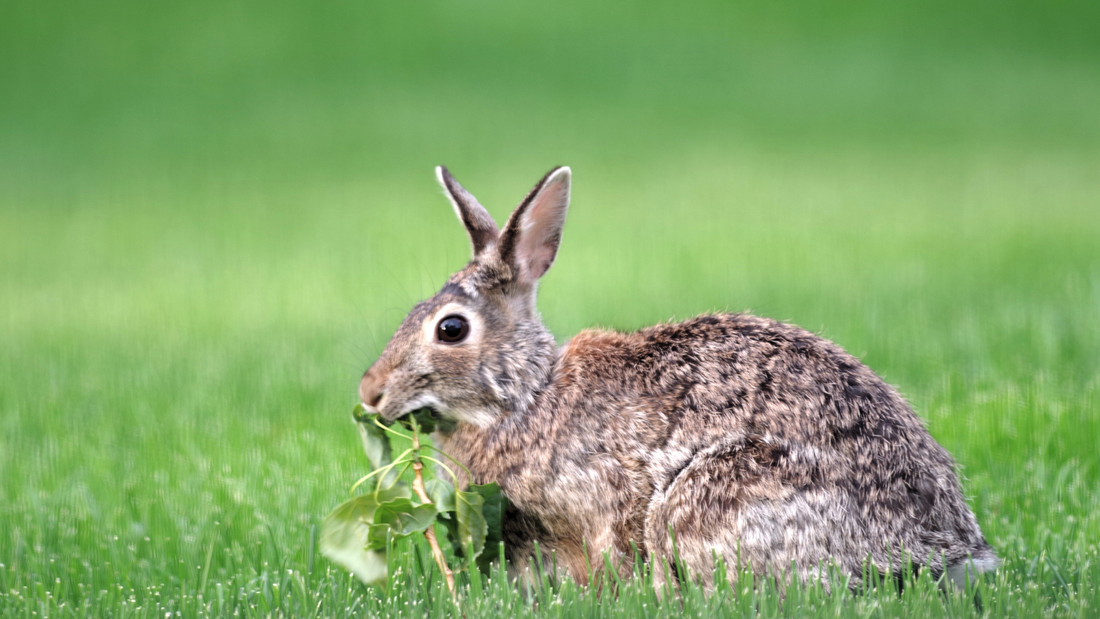
Rabbit-Resistant Plants
Jump to our rabbit-resistant plant collection
"What do you have that rabbits won't eat?"
I get this question many times a week. In early summer, it seems like rabbits are everywhere you look. The other evening I saw three generations frolicking in the nursery. Fortunately the plants are on benches and safely out of reach. They have plenty to eat between the prairie, lawn weeds, and of course my garden. While they are cute, it's discouraging to lose brand-new plants to rabbit damage.

This second-year blazing star was munched on several times but is still bravely attempting to grow
Yes, there are rabbit-resistant plants
Nothing is completely rabbit-proof, however. Young animals will nibble on just about anything and young plants with tender leaves are particularly vulnerable. I have heard stories of rabbits eating peppers, mint, and other things they are not "supposed" to like. But generally rabbits (and deer for that matter) tend to avoid species with strong scents, toxic sap, and rough textures.
Native plants that fit the bill include:
- Mountain mints (Pycnanthemum species)
- Nodding onion, prairie onion, and wild garlic (Allium species)
- Wild bergamot (Monarda fistulosa)
- Anise hyssop (Agastache foeniculum)
- Prairie sage (Artemisia ludoviciana)
- Rattlesnake master (Eryngium yuccifolium)
- Wild quinine (Parthenium integrifolium)
- Black-eyed Susan (Rudbeckia hirta)
- Many grasses, such as little bluestem (Schizachyrium scoparium), purple love grass (Eragrostis spectabilis), and prairie dropseed (Sporobolus heterolepis)
Check out our rabbit-resistant collection to find these species and more!

Rabbits tend to avoid the strong aroma of slender mountain mint (Pycnanthemum tenuifolium)
Vulnerable species
Some plants seem irresistible to rabbits. In my experience, they especially love New Jersey tea (Ceanothus americanus), prairie clover (Dalea species), blazing stars (Liatris species), wine cups (Callirhoe triangulata) and many asters (Symphyotrichum species). Be sure to set up protection measures when planting these.
Protecting your plants
If you have your heart set on a vulnerable species or rabbit pressure in your yard is high, I recommend fencing new plantings for a few months to let the plants get established. If they get nibbled the following year, they often regrow just fine. Every year the deer chomp a few of my New England asters and by fall you can't even tell. The fence doesn't have to be fancy - a 3 ft tall roll of chicken wire, wooden stakes, and some landscape pins can save you a lot of frustration in the long run. Deterrent sprays like Liquid Fence can also be effective, but must be reapplied after it rains.
Smart garden design can also help: Disguise vulnerable species by planting rabbit-resistant species nearby. For example, plant prairie clover among little bluestem or alliums among wine cups. A young New Jersey tea surrounded by mulch is practically asking to be eaten. Plant densely and include more than one plant in more than one spot in your garden. The rabbits might get one patch but leave another for you to enjoy.

Plant densely and repeat plants in different places to make it harder for rabbits to eliminate an entire species from your yard
Remember, some plant losses are inevitable
As they say, gardening is a journey, not a destination. You will lose some plants. Rabbits are part of the ecosystem too and while their populations may be too high, you can still take some pleasure in knowing you helped feed wildlife. And next year, maybe try that fence.
